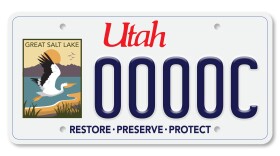-
Since 2019, there have been seven different releases of a special kind of firefighting foam at the airport. Officials stress they are always on the lookout for spills, with three fire stations on site, an operations team, as well as 37 spill kits spread across the airport for rapid response.
-
It’ll be a simple, white plate with a Great Salt Lake logo on the left. A full, edge-to-edge plate design could come once the state approves new branding standards.
-
The Utah Investigative Journalism Project reviewed 174 reports made to the state spills database from 2019 through the first half of 2024 that specifically related to pollution of storm drains and some of the main surface waters that feed the Great Salt Lake.
-
There are currently only four dust monitoring sites at the Great Salt Lake, but “we need better data,” says the director of Utah’s Department of Environmental Quality.
-
Todo lo que ganó el Gran Lago Salado durante el invierno probablemente se disipará para finales del verano. El comisionado del Great Salt Lake, Brian Steed, insta a los habitantes de Utah a ser conscientes del uso que hacen del agua.
-
There are more than 800 square miles of exposed lakebed, and researchers are just beginning to understand how pervasive the dust problem is.
-
All of the gains the Great Salt Lake made over the winter will likely dissipate by the end of summer. Great Salt Lake Commissioner Brian Steed urges Utahns to be mindful of their water usage.
-
The Utah Lake Authority is launching a new campaign to get Utahns to visit the state’s largest freshwater lake and change perceptions about the misunderstood body of water.
-
The UCLA study says Utah trails other Colorado River Basin states when it comes to cleaning and reusing wastewater. Propping up the Great Salt Lake, however, complicates things.
-
As the new License Plate Design Review Board contemplates design criteria, the Great Salt Lake plate is stalled.
-
This year marks the 125th anniversary of the nationwide Christmas Bird Count. The data volunteers gather in Utah helps scientists understand how climate change and other factors threaten bird habitats.
-
In a dry state like Utah, leaders want to know exactly how much water leaves the state. Historically, however, there hasn’t been much data about the water that evaporates into the air. The Utah Flux Network aims to change that.
Play Live Radio
Next Up:
0:00
0:00
Available On Air Stations











